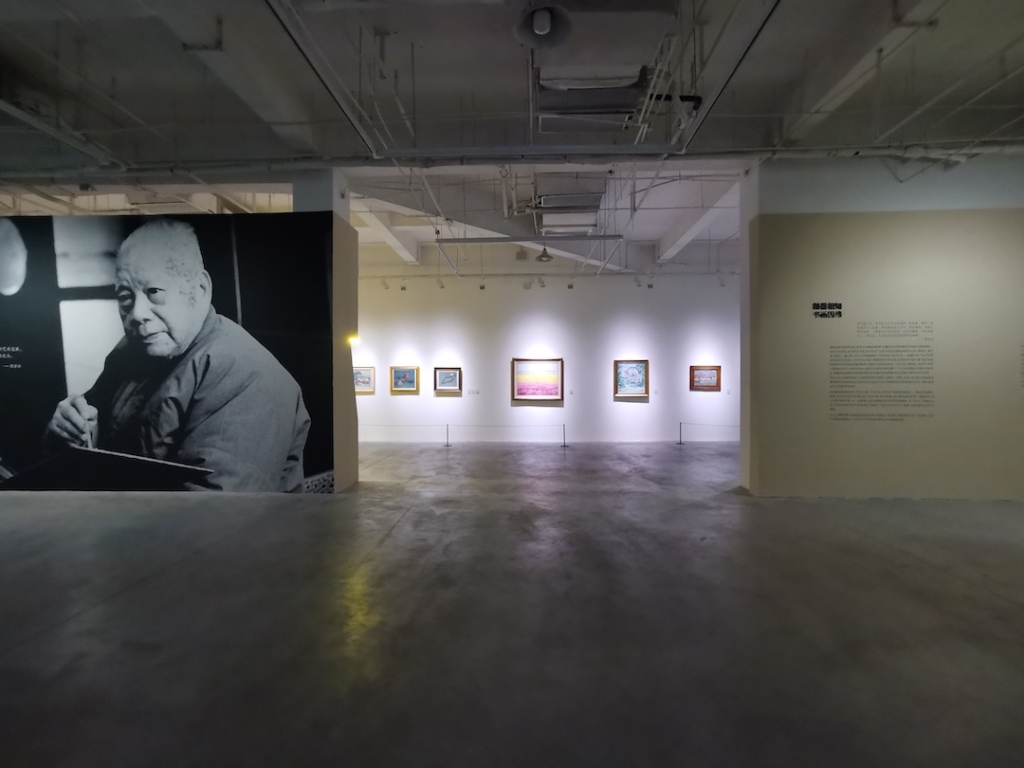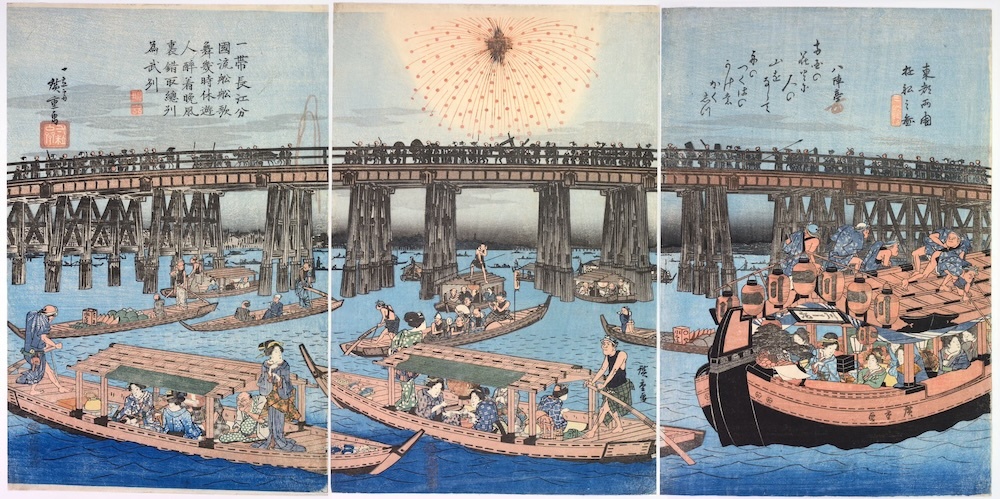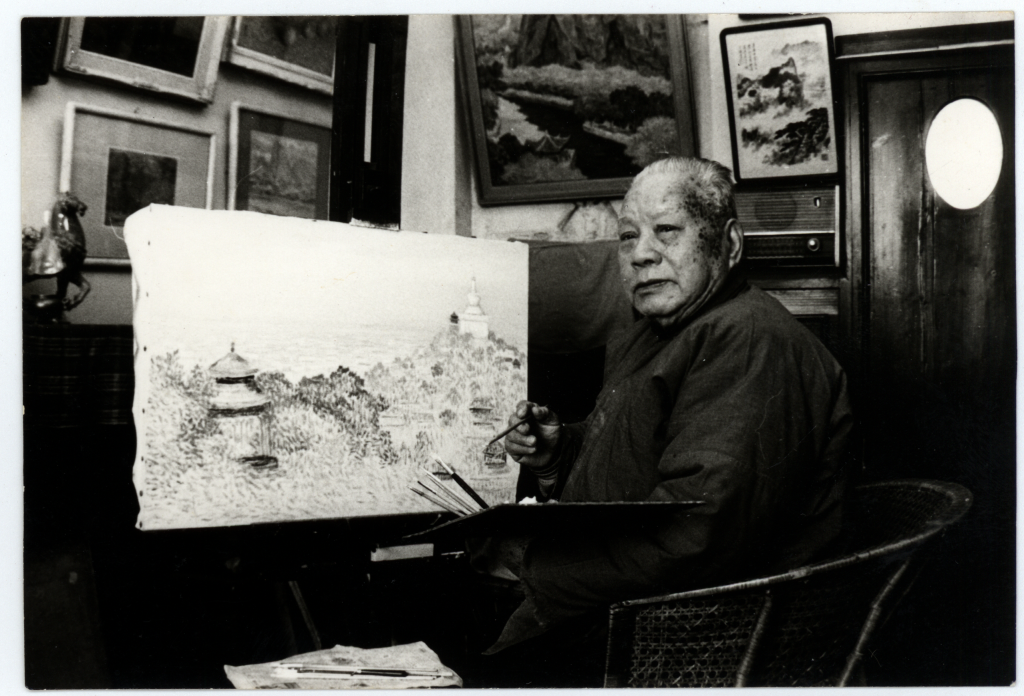
When reading the painting, I couldn't help but blurt out: "Right, right, every stroke is right, the more I look at it, the more amazing it is..." - In fact, the word "right" simply means that the painter's paintings are on the right track and conform to the basic "principles" of painting.
"Poetry of Colors - Zhou Bichu Donated Art Exhibition" (April 18-June 2) is currently on display at the Shanghai Oil Painting and Sculpture Institute Art Museum. This article is the author's notes on the exhibition. Zhou Bichu (1903-1995) was a pioneer of modern Chinese oil painting and modern art education, and the first generation of Chinese oil painting masters. Last September, Zhou Bichu's family representatives donated more than 100 pieces of Zhou Bichu's fine paintings and art documents to the Shanghai Oil Painting and Sculpture Institute.
On May 14, the weather was damp and hot, just like the plum rain season. I went to the Shanghai Oil Painting and Sculpture Institute alone to see the "Poetry of Colors - Zhou Bichu's Donated Art Exhibition".

Exhibition View
I have been looking at the paintings of this Shanghai School grandfather who studied in France for thirty or forty years, and I never get tired of them. The more I look at them, the more I am attracted to them, and I feel that there is endless charm in their paintings.
When one slowly views and reads attentively in the dark and quiet exhibition hall, one feels as if one is having an intimate conversation with this kind elder. One feels warm in the heart and throughout the body.
The more you look at his paintings, the more you like them. Behind the brilliant colors is the artist’s breadth, kindness, and humility, which are full of endless charm.
This exhibition presents more than 120 works of the painter, which is a magnificent sight. However, many of the works are already as familiar as old friends. I have seen them several times in different places, but every time I see them, I have new experiences and discoveries, even surprises.
For example, the old man's rabbit lamp, "New Year" painted in 1966, I have seen it countless times in his home and exhibitions, and I thought I knew each other very well. This is also one of my favorite masterpieces of Mr. Zhou. It can be said that I fell in love with it at first sight. Every time I see it, I always look at it carefully, "get intimate" with it with my eyes, and "gaze" at it.
This time when I saw it again in the exhibition hall, I looked at it carefully again and discovered many details that I had not noticed before.

"New Year" Oil on canvas 58cm×79cm 1966
The furry tassel-like paper silk pieces on the rabbit lamps, as well as the little boy dolls, etc., are the result of the painter's combination of craftsmanship and writing. If you look closely, every line and every dot is alive. The dots, lines, and surfaces are a trinity here, mixed and unified. The dots are the lines and the surfaces. With thousands of strokes, the appearance of the rabbit lamps is vividly expressed, which is a great test of the painter's pointillism skills. The two rabbit lamps became his experimental field for pointillism techniques. The so-called "making use of the past for the present and the foreign for the Chinese" advocated in that era was easily and cleverly "caught in one net" by the old man.
I held onto my glasses and leaned closer to the painting, carefully appreciating every subtle stroke in the painting. I couldn't help but exclaim to myself, "Right, right, every stroke is right..."
In fact, the word "right" is a bit like a jargon, and is a catchphrase that a group of old painters in Shanghai often say when they look at paintings to show their expertise and ingenuity, often leaving people around a little confused. In fact, this word is nothing more than saying that the painter's paintings are all on the right track, in line with the basic "legal principles" of painting, without any crooked paths or habits. As for what is good about it, everyone is an expert, and those who know will understand. If you don't understand, it's your own business, and you can figure it out and learn it yourself. There is no need for me to nag you. The noble and lofty nature of Shanghai Ning is here, and it is fully demonstrated.
But then again, the word "right" also expresses an artistic reality, that is, the core aesthetic value of a work of art, which can only be understood but not expressed in words, and cannot be explained or replaced by words or language. Otherwise, art would have no meaning of existence.
Mr. Zhou Bichu's paintings are diverse and rich in techniques. He has solid realistic skills and draws valuable nutrition from impressionist paintings, thus becoming an extraordinary master of color. The colors in his paintings are both lyrical and healing, emerging one after another like magic, competing for beauty.
For example, he likes to paint landscapes with pink peach blossoms and green willows, but when he mixes green and red, they do not look vulgar at all, but rather calm, restrained, subtle, timeless and refreshing.

"Little Three Gorges" oil on canvas 79cm×60cm 1984 Collection of Shanghai Oil Painting and Sculpture Institute

"Donghu (Shaoxing)" Oil on canvas 63.5cm×91cm 1982 Collection of Shanghai Oil Painting and Sculpture Institute
The old man was even more skilled in his later years, following his heart without breaking the rules. For example, the two works "Little Three Gorges" and "East Lake" were completed by him with a scraper in his 80s. The colors are flying and jumping, which makes people brighten their eyes.
It is difficult for ordinary painters to "scrape" out good works with scrapers, and if they are not careful, they will make them vulgar. But the two paintings by the old man are elegant and affectionate, colorful and gorgeous, as if the happy notes jump onto the canvas by themselves, the dots and lines are not broken, and are both discrete and aggregated. The imagery is straight into the realm of perfection, and the taste is endless.
In his later years, Zhou Bigu also painted many small landscapes. As if he was stingy with paint, he rubbed the canvas with a dry brush, which was very similar to the burnt ink and thirsty brush in Chinese painting. The lines were very rough and dry, with a lot of white space, shadows, and simple brushwork but far-reaching meaning.

Wuyi Mountain, oil on canvas, 26.5×37.5cm, 1982, collected by Shanghai Oil Painting and Sculpture Institute
For this reason, I specifically went to consult the curator Li Shiwen and asked him whether Mr. Zhou and Huang Binhong had ever met. I felt that the painting was clearly inspired and influenced by Mr. Binhong.
Brother Shiwen's answer was very positive. He said that in 1943, Zhou Bichou went to Beijing to hold an exhibition, during which he met Mr. Bin. The two discussed Chinese and Western paintings, and they got along very well and reached many consensuses. Zhou Bichou even praised Mr. Bin's paintings for being the most Western-conscious.
Brother Shiwen also said that their paintings were actually greatly influenced by the "dot-stroke method" in traditional painting, but Mr. Zhou changed it to pointillism. He lamented that Zhou Bigu's artistic practice and artistic value were far underestimated, and the research and exploration of him had just begun. His words opened my eyes.
In fact, Zhou Bichou has always been very knowledgeable about Chinese painting. He is not only good friends with Chinese painters such as Zhu Qizhan, Lu Yanshao, and Tang Yun, but they often discuss painting skills together. He can also paint in ink and wash, and his ink and wash works are also displayed in this exhibition hall. In addition, he also admires Qi Baishi very much and has collected several of his works. He also bought a flower album of Qi through Xu Beihong. It is exquisite and seems that Rongbaozhai has made woodblock watermarks. This album was carried with him during his stay in Indonesia, and he met it day and night, using it to peek into the brushwork and ink interest of Chinese painting.

Zhou Bichu "Wisteria" Color on paper 68×39.3cm 1980 Collection of Zhou Bichu Art Museum in Pinghe, Fujian
So if we look at Mr. Zhou's oil paintings from the perspective of traditional brush and ink, his "brush and ink" skills in his oil paintings are equally amazing, and every stroke and every line is clear and "correct". This is similar to the Impressionist masters such as Monet in his later years. Every stroke and every line of theirs is "correct", "alive", and full of life and energy.
Zhou Bigu's art combines splendor and plainness into one, and the unity and harmony of the two shows the artist's great personality cultivation, humility, gentleness and kindness.
There are many of his masterpieces, and they are so numerous that I cannot list them all due to space limitations. I will come back to appreciate and talk about them in the future. However, it is worth mentioning that the paintings "Spring Scenery" (1963) and "Ancient City Water Village" (1961) in the exhibition hall are also my favorites. Every time I stop and linger in front of them, I can't stop. These two works are also outstanding and innovative masterpieces. In Suzhou dialect, they are both "top scholars."

"Spring" Oil on canvas 80×100cm 1962 Collection of Shanghai Art Museum

Ancient City Water Village, oil painting on canvas, 38×55cm, 1961, collected by Shanghai Oil Painting and Sculpture Institute
In order to get to know this old master of painting more deeply, I went to Zhangzhou, Zhou Bichu's hometown, on the Lantern Festival this year to experience the customs and culture of this thousand-year-old city and famous hometown of overseas Chinese, the openness and tolerance of hundreds of years and the close exchanges with the world, and the rich humanistic atmosphere. In addition, I also traveled to more than ten cities across the country. After this trip, I read Mr. Zhou Bichu's paintings again, and I felt that my skills have been improved a lot, and I have a lot of new understandings of his art.

The restored studio of Zhou Bichu during his lifetime
Written on May 18, 2025 at the International Museum Festival


